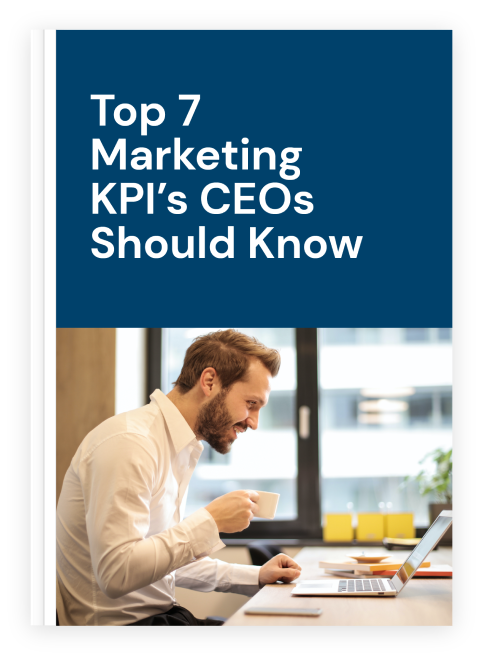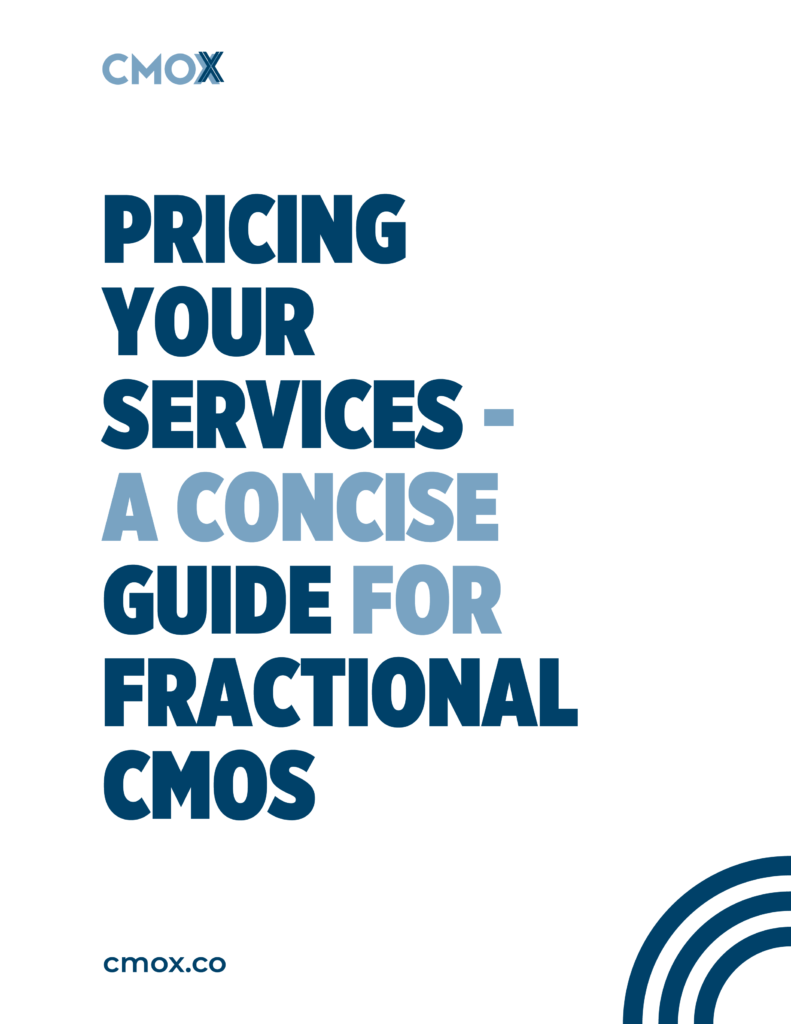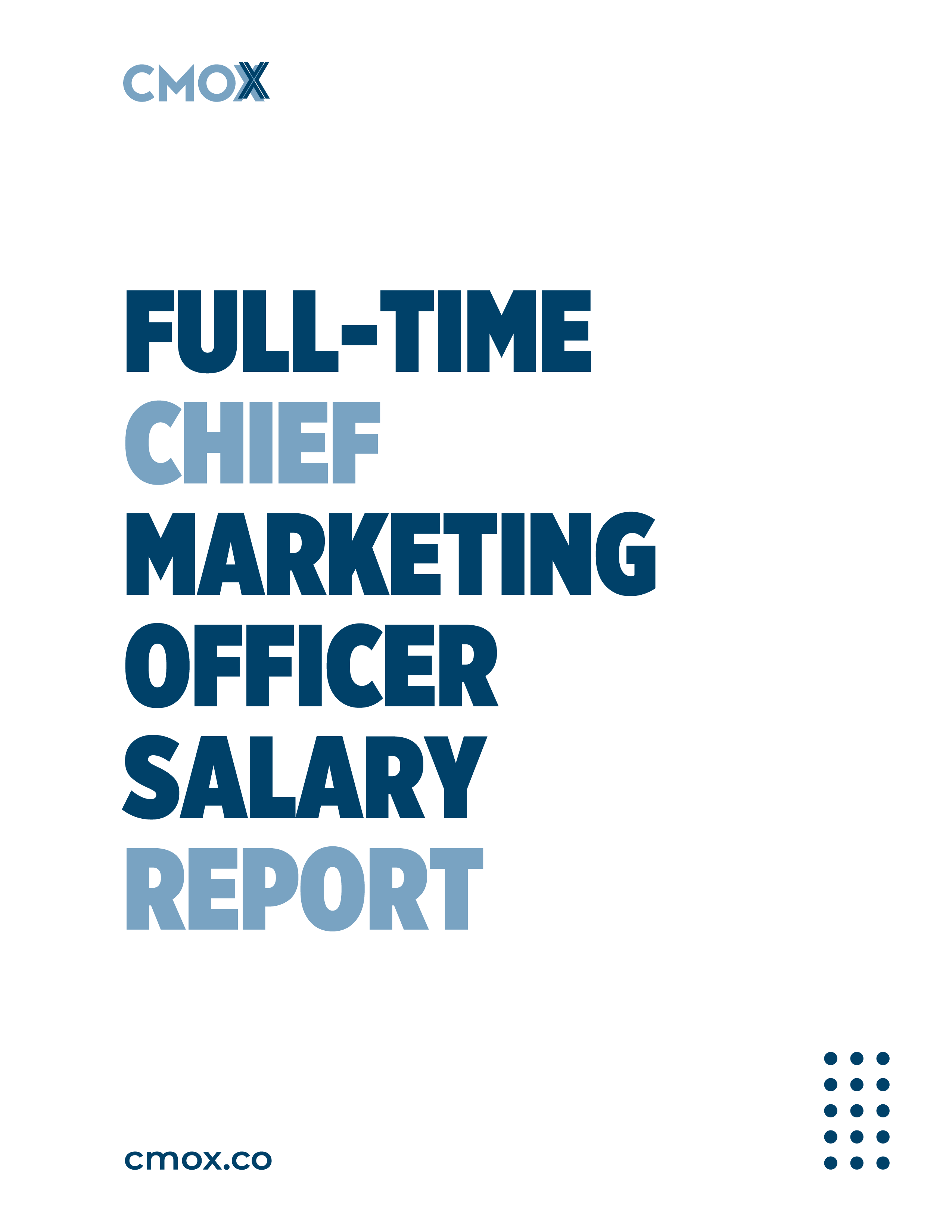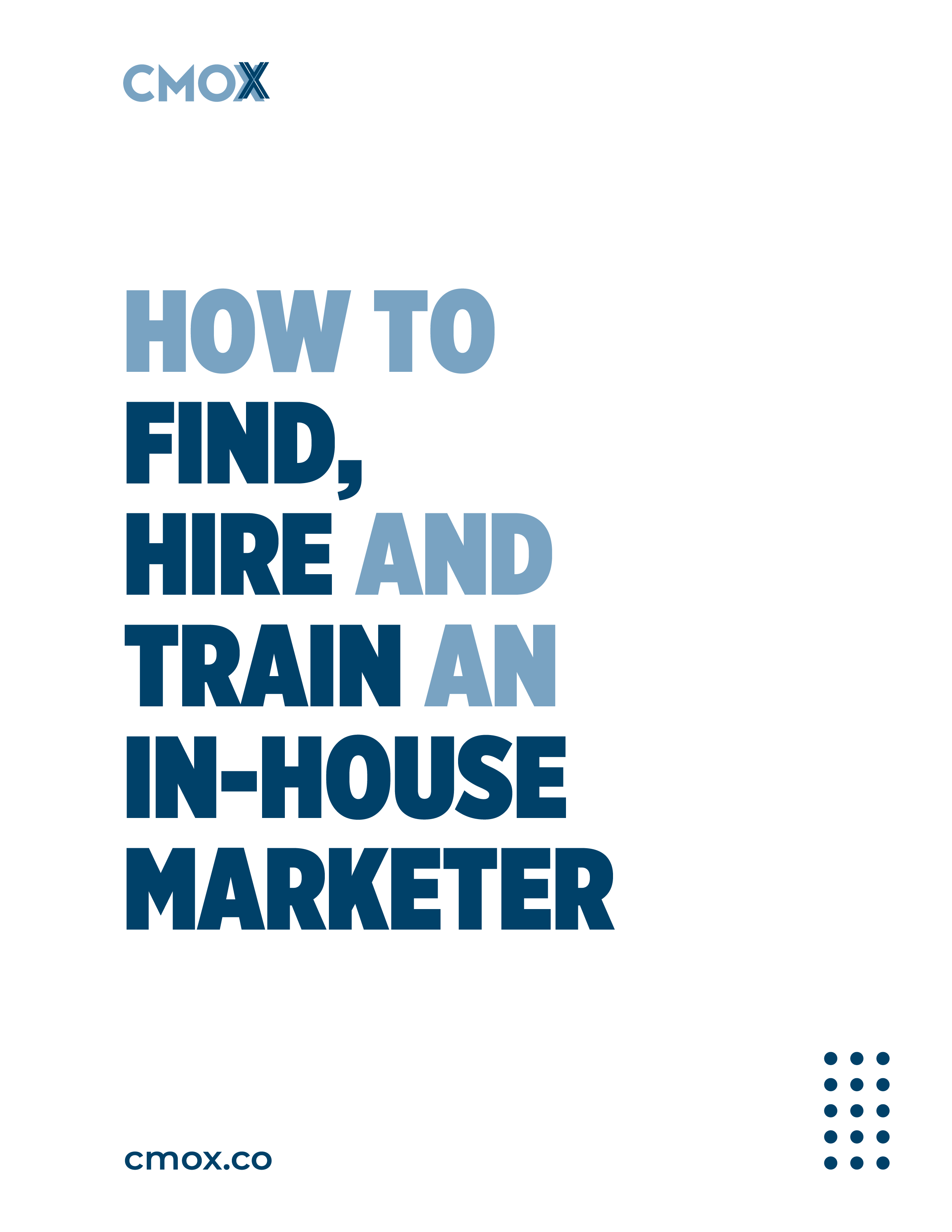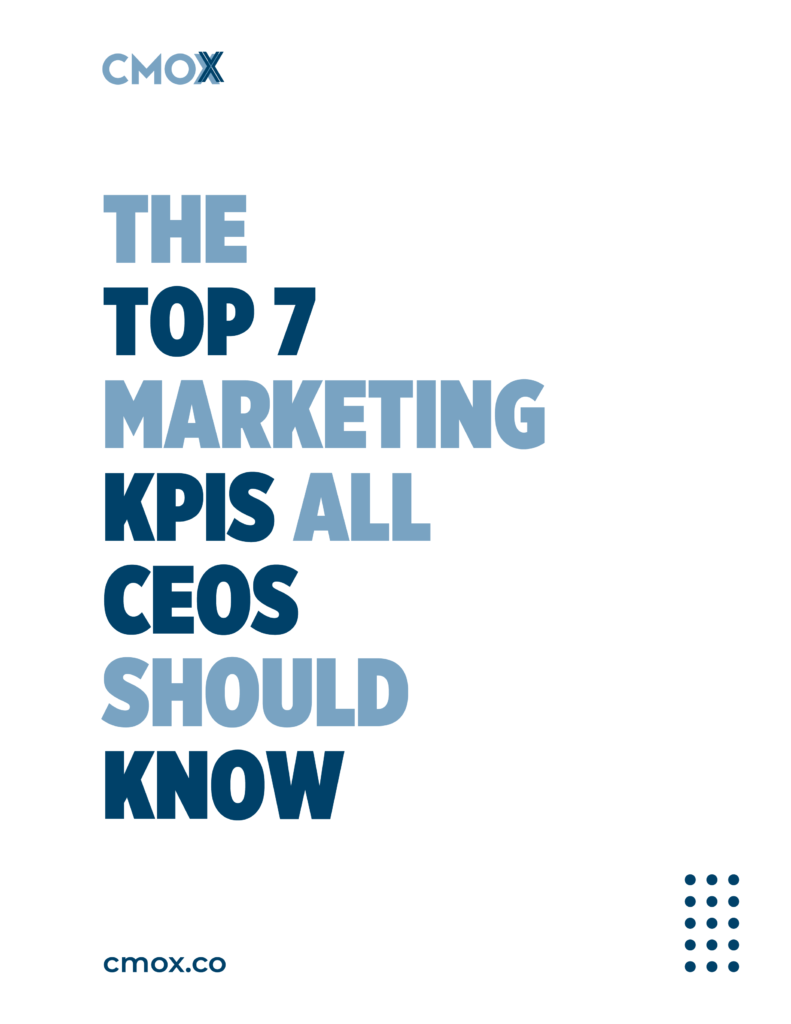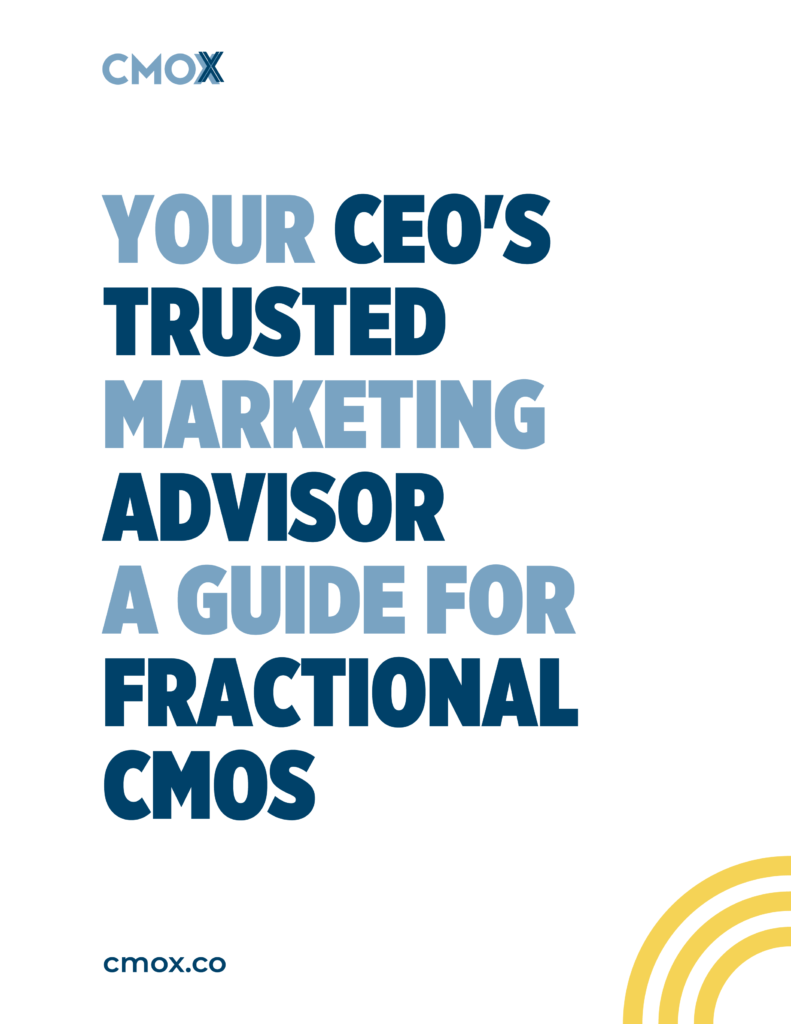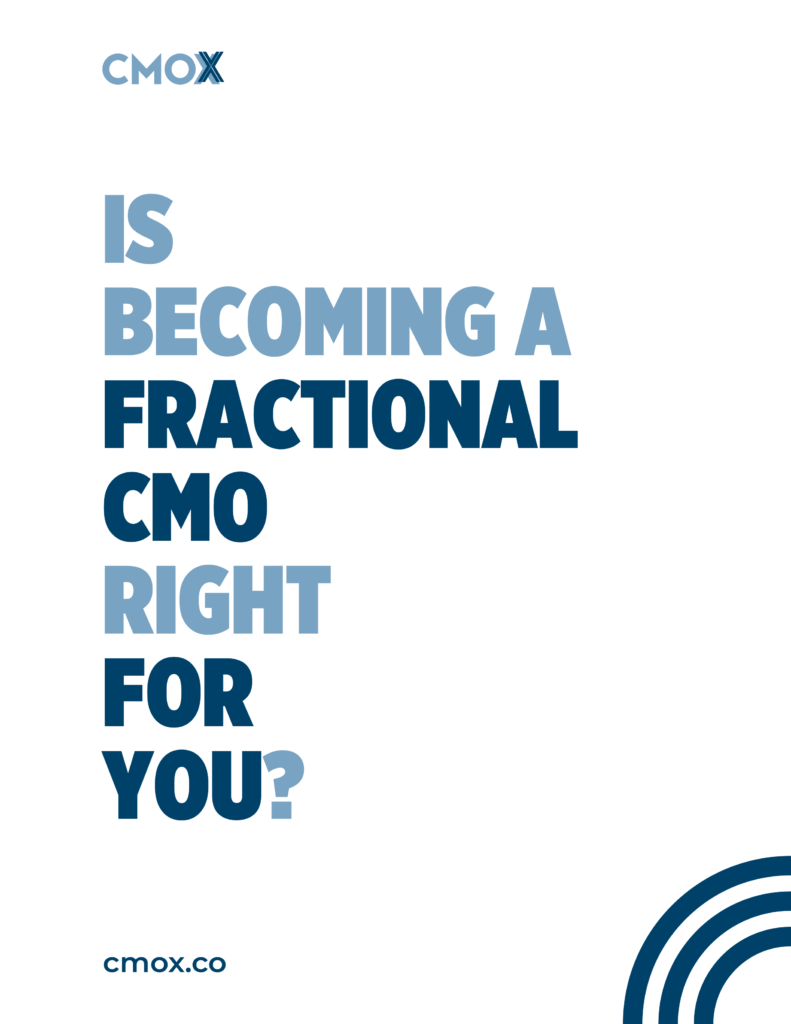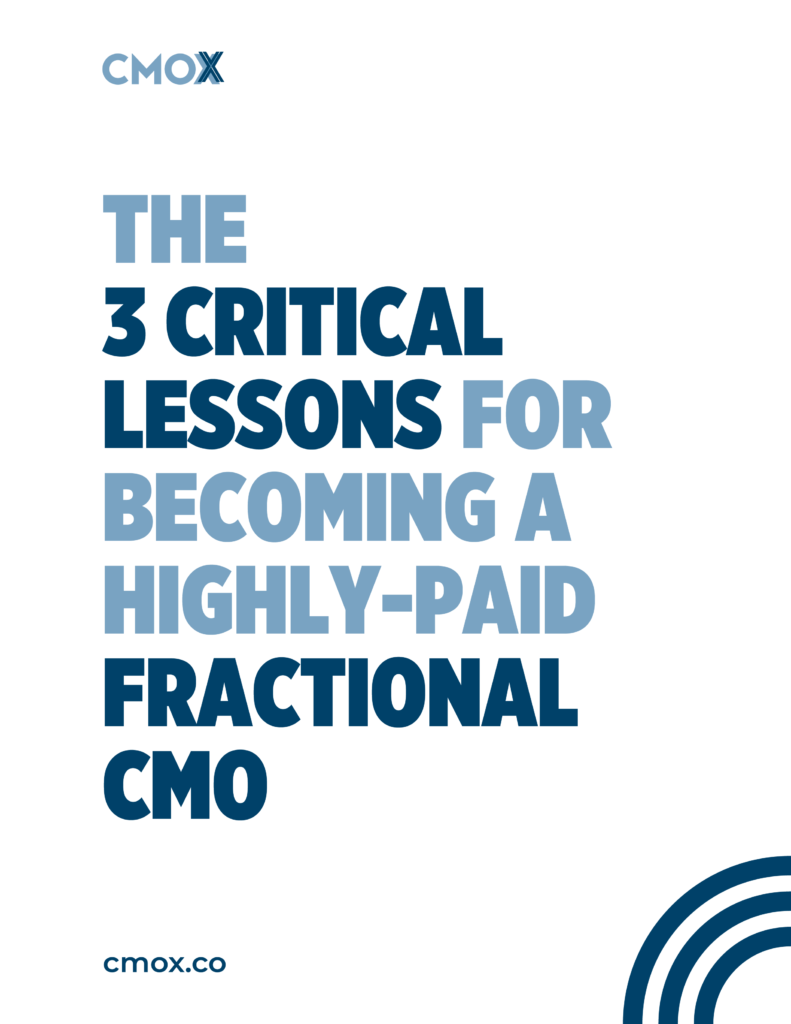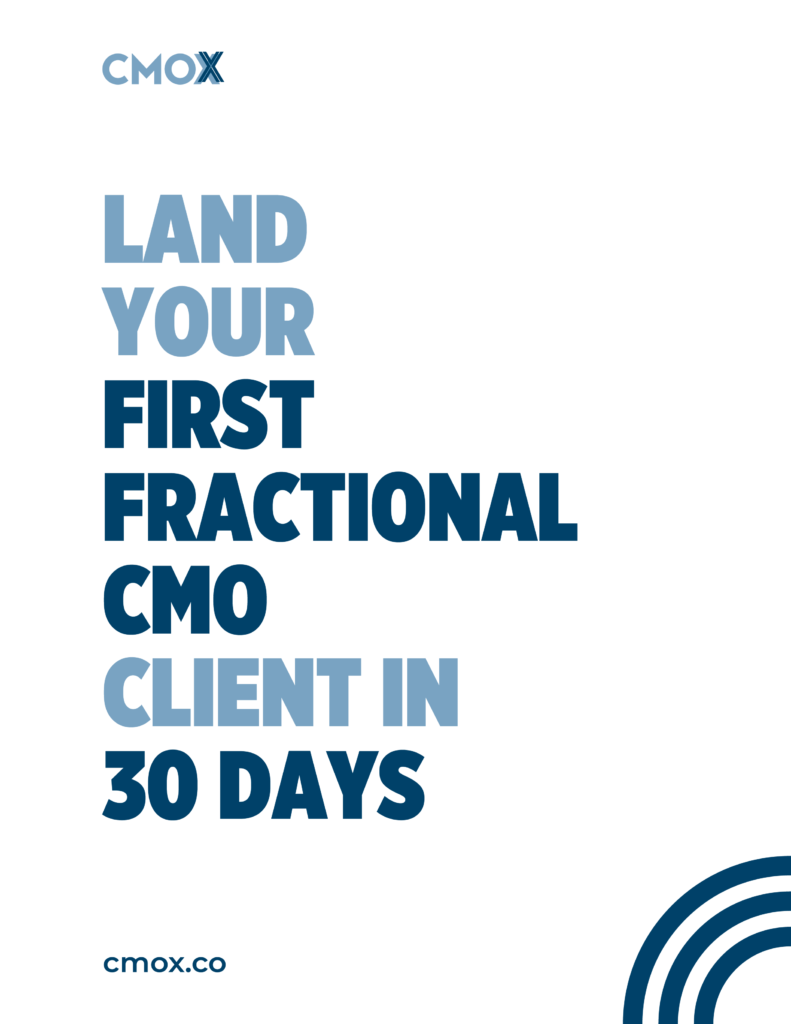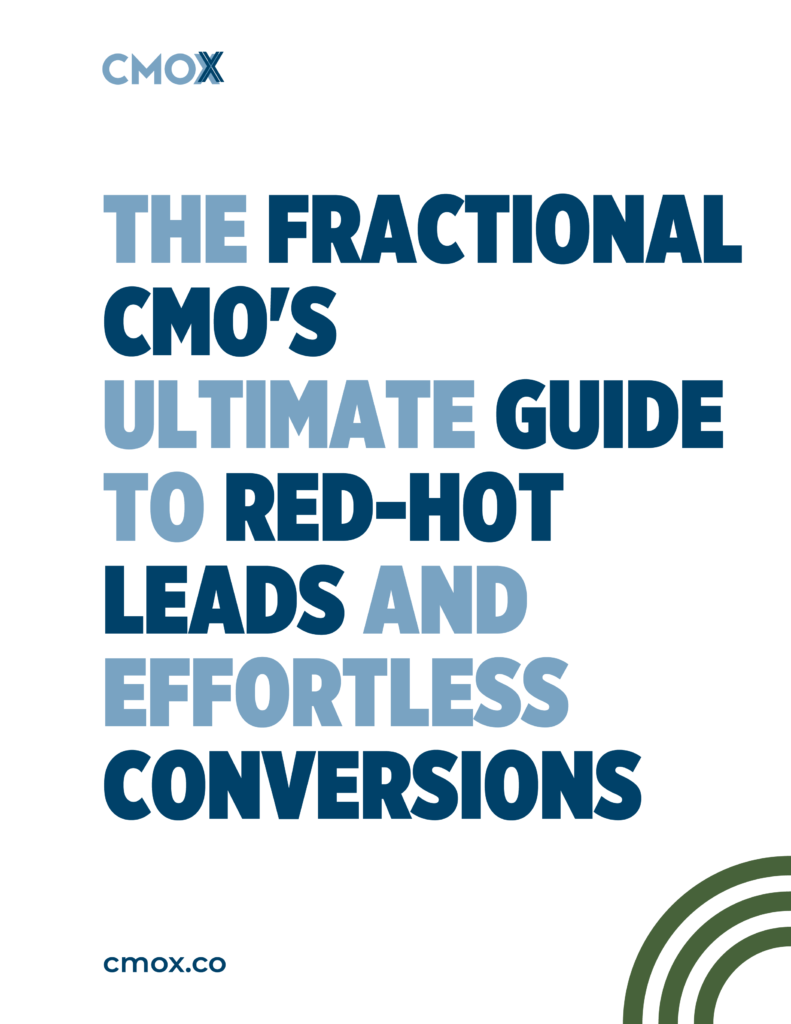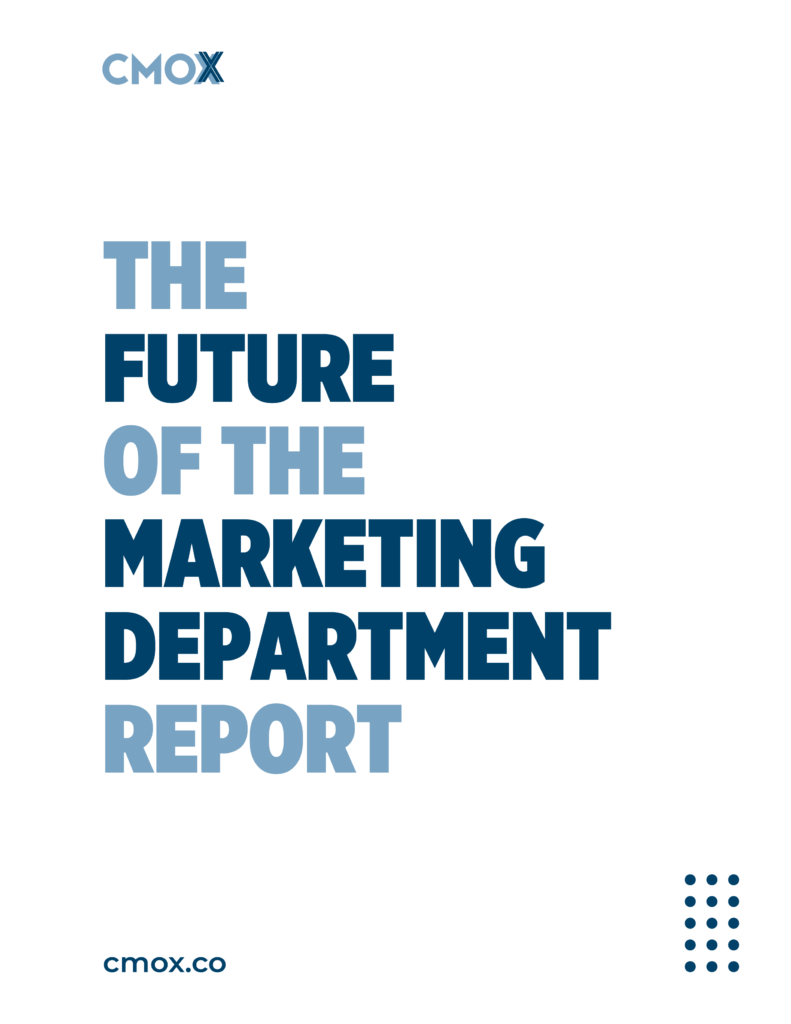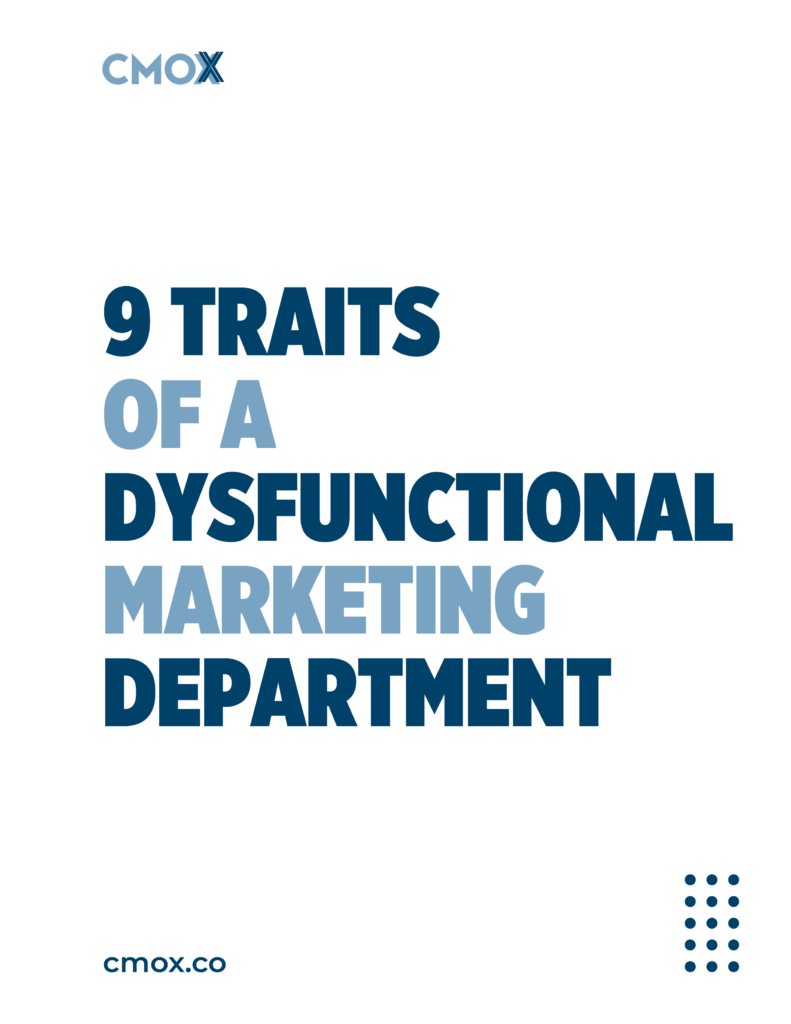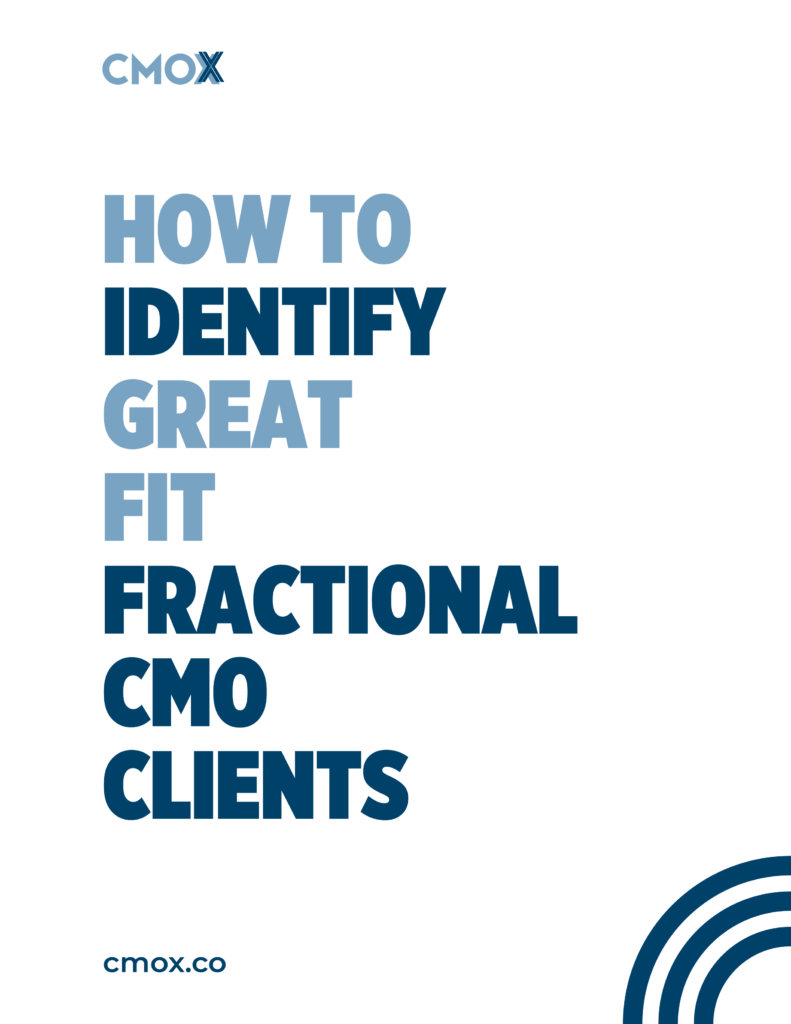Ep #94: How to Position Yourself as the Most Valuable Executive to your Entrepreneur

In this episode of The Fractional CMO Show, Casey Stanton dives into the key strategies for building long-term relationships with visionary entrepreneurs as a fractional Chief Marketing Officer (CMO). Casey shares actionable insights on how to support your clients beyond their business success, helping them achieve personal growth and create a bigger vision for their company. Learn how to foster loyalty, drive profitability, and inspire your clients to dream bigger while positioning yourself as an indispensable partner in their journey.

Episode highlights:
In this episode of The Fractional CMO Show, Casey Stanton dives into the key strategies for building long-term relationships with visionary entrepreneurs as a fractional Chief Marketing Officer (CMO). Casey shares actionable insights on how to support your clients beyond their business success, helping them achieve personal growth and create a bigger vision for their company. Learn how to foster loyalty, drive profitability, and inspire your clients to dream bigger while positioning yourself as an indispensable partner in their journey.
Here’s what we talked about:
- How to become indispensable to visionary entrepreneurs.
- Strategies for ensuring clients bring you along to their next ventures.
- Differentiating between business success and personal success.
- Creating a compelling vision that motivates teams and drives company growth.
- Using bonus structures to align team goals with company outcomes.
- Importance of EBITDA and profitability in sustaining business success.
- Positioning the company as the number one in its niche or industry.
- Rallying teams around a shared mission to outperform competitors.
Transcript:
00:00:00 Casey: In this episode, I’m going to talk to you about the single most important way to view your relationship to your client so that they can take you along to the next company when they started. If you want to have longer term commitments with your clients, stick around for this episode.
00:00:19 Casey: Marketers of the world, why do we work hard to solve small problems? Why do we reinvent ourselves and our clients over and over? And why are we giving away marketing strategy for free? With advancements in AI, we’re all seeing the marketing department shrink from the bottom up. And companies need you to serve them as their fractional chief marketing officer. It’s time to solve bigger problems and bring home a bigger paycheck.
00:00:47 Casey: It’s time to create the lifestyle we deserve and to make a greater impact. This is the Fractional CMO Show and I’m Casey Stanton. Join me as we explore this growing industry and learn to solve bigger problems as marketing leaders. The Fractional CMO Show is sponsored by CMOx, the number one company to teach you how to attract, convert and serve high paying fractional CMO clients on your terms.
00:01:16 Casey: Hey y’all, welcome back. It’s Casey here. Let’s talk about this thing. What do you do to support your client for the ultimate thing that you want? Which is like for me, if I’m working with clients as their fractional CMO, I don’t want to work on a project with them and then be done. I want to find great visionary entrepreneurs that I vibe with, people that I really enjoy working with, people that think big, people that are doing really cool stuff and I want to help them and then I want them to pull me along to the next project because the problem with entrepreneurs is that they can’t stop, right?
00:01:52 Casey: Once they understand that they can build a business, they probably get bored of it and they wanna build another business and they wanna keep going and going and going. And you wanna be the person that they pull along with them because you don’t have to like relearn them, you your next client. Every time you get a new client, you gotta like learn what they’re up to, learn who they are, learn their likes and dislikes. Like you gotta figure out how to like, you know, take care and feed your entrepreneur.
00:02:14 Casey: I want to just find the few great ones and then stick with them for years. So here’s how you can do that. It’s simple. Here’s the idea. Defend your entrepreneur and vie for their success. There’s the success of the business, which is obviously important, but then there’s the success of the entrepreneur. And these things sometimes can feel like the same thing, but I’m going to give you some concrete examples on how they’re different and how it’s unique and how you can be supportive of the entrepreneur and not necessarily be like supporting the company. So that might sound kind of weird. Here’s what I mean.
00:02:48 Casey: If you’re working with an entrepreneur and you’re inside of quarterly planning and you’re just kind of the vibe that they’re a little stressed out about things, you might want to like interrogate and kind of figure out why. Grab them on a lunch break. Be like, yo, what’s up, man? Seeming like a little stressed by stuff. How’s your calendar right now? How much white space do you have? If there was one thing that I want to do for my entrepreneurs, it’s I want to give them white space. I want to give them spaciousness.
00:03:12 Casey: I want to give them a day without meetings. So here’s a crazy idea. I want you to propose this to your clients, your marketing department and your entrepreneur, like the CEO of the company, say, hey, can we like Institute a no meeting day? See what happens. They might say like, it’s not possible because it’s like, yeah, but what have we tried it? How much work can the company get done if no one has to meet for a day on a no meeting day? I’ve run them with clients before we would meet for standup if I was their fractional CMO.
00:03:42 Casey: In the engaged capacity, we would meet for a standup for 15 minutes in the morning and then say, all right guys, you will bring shame and dishonor to this company if you have a meeting today, get to work. And then people would have seven and a half hours of work that they could go do without getting interrupted. It was huge. It’s huge for the marketing department. It’s huge for the entrepreneur. Can you help them with that? Can you propose these big grandiose crazy ideas of like, Hey guys, no meetings on Wednesdays. It’s pretty good.
00:04:09 Casey: I don’t think I’d want no meetings on Fridays. It’s always been Wednesday or Thursday. Those are the days that I do no meeting days. Why Wednesday or Thursday? It’s like if there’s no meeting on Friday, I don’t know. Maybe I have some fear that people won’t work on Friday. I don’t know. Certainly like other departments that could happen. In the marketing department, I’m less worried because everyone has big outcomes that they’re chasing after and they got to deliver on them. They can self-manage a bit. So I guess I’m less concerned about the marketing department, but maybe in the business by and large.
00:04:37 Casey: I don’t know if I’d institute a Friday, no meeting day that might, that might open up the doors for people to kind of phone it in on Fridays and not work hard. Obviously not what we want if we’re paying people for full-time labor. So I want you to maybe institute a no meeting day or propose it or have an executive leadership no meeting day, right? Like just because your staff has to do meetings doesn’t mean you as the fractional CMO and the rest of the C-suite and the CEO have to have meetings.
00:05:04 Casey: You guys could all say like, Hey guys, we’re not going to do meetings on Wednesday. Like we’re not going to chat with each other. If we have any questions for each other, we’ll do it on Tuesday or we’ll do it on Thursday, but we won’t do it on Wednesday. That could free up your entrepreneur. That could be a really big deal. Another thing that I want you to do to defend your entrepreneur, to really like help them is I want you to get them to dream bigger. And dreaming bigger has a knock on effect. So let’s talk about what that knock on effect is.
00:05:29 Casey: If they create the vision of being like, we want to grow, we want to double in revenue. Who doesn’t want to double in revenue? But who cares? Like the entrepreneur cares because the entrepreneur says, finally, when we double revenue, our margins go from 15 % to 30%, which means I’ll profit X amount of money on top of my current run rate. And this is true for most businesses. They’re reasonably inefficient until a certain revenue number. And then beyond that, they’re much more efficient and there’s more profit. So an entrepreneur might say, yeah, I want to double revenue because they just want to like get more income.
00:06:05 Casey: They want to like take home more money. They want more owners distribution, whatever it is, but no one’s excited about that. It’s like in marketing, like just imagine, Hey guys, we’re going to double the company. And everyone’s like, why? You’re like, cause the boss said so. Okay. Like it’s, it’s not an exciting thing. No one’s to get out of bed and be like, hey honey, guess what? We’re going to double in size. No one cares. You know, when a company like is brand new, like a startup and it runs up to its first million dollar a year.
00:06:30 Casey: That’s a big deal, right? People get excited about that. But after that, dude, what’s a 2 million? What’s a 3 million? What’s a 5 million? No one cares. What’s a 10 million? Maybe that’s kind of interesting for a couple people. Your infantry men and women who are on the front lines slogging every day, doing sales calls or doing outreach or customer service or whatever, they don’t care if it’s a $10 million a year company. So I want you to encourage your entrepreneurs to dream bigger and create a bigger future for the organization. And I think it’s easy just to create the best.
00:07:00 Casey: So just, if you want the shortcut, here it is. Create the number one company. You want your client to be the number one company in XYZ. And you could maybe niche it down. We want to be the number one SaaS for XYZs east of the Mississippi. Like you could do that, but you’re still the biggest and it’s measurable. And like there’s a mission behind it and people get excited. And like, I can rally the team like, guys, we’re going to be the best. See that? That’s our competitor. Let’s crush them. And we see what they do and we laugh about it in Slack or in, you know, God forbid Teams.
00:07:31 Casey: Like we want, we want to have an enemy. want to have like mediocrity be the enemy or a specific company be the enemy. And we want to rally around that and just like destroy them. Like that’s fun for people. It’s fun to find a company that is the leader. And then just to like, just be like, hey guys, we’re smarter than them. We’re smaller. We’re mightier. We’re going to crush them. Let’s do it.
00:07:55 Casey: We’re going to be the number one. We’re going to beat them in the Inc 5000 list. We’re going to get revenues above them. We’re going to have more banner companies, know, better clients than them. We’re going to get higher EBITDA because they’re publicly traded or like whatever the thing is, you want to create this bigger vision for your entrepreneur. You want to like encourage them to state it. Ultimately they have to say it, right? Because at a minimum you can say, I’m going to build a world-class marketing department and the department is going to rock. It’s going to be the best department in the whole company.
00:08:25 Casey: It’s us against everyone else. Like we work well with the other departments with sales, with tech, with service, whatever. Man, I just want marketing to be the best. I want us to be the best. I want us to be the hungriest. I want us to be the most focused. That’s, easy for most companies. Like we can do that. But I want the whole company to have a bigger umbrella, where we’re going to dominate. worked with a company and I got into quarterly planning with them and.. I was kind of like, this is kind of a whatever project. Like it’s a good project. It pays well. I like the people.
00:08:58 Casey: And they announced to me in the meeting, they’re like, hey, we just want to share that this is what we’re up to. And they shared this vision for me. They changed everything for me. It changed how I perceive them. changed my respect for them. It changed how I showed up for the team, how I showed up for the executive leadership team. It changed how I experienced my myself, having been chosen to be in the role to support that vision. I mean…
00:09:24 Casey: Honestly, I was taking that quarterly planning call on a walk. Like I was kind of being, um, flippant about it. You know, I was like, hey guys, I can’t be on video today. They’re like, no problem. You know, as much as I on a walk downtown Philly. remember it. I’m on, I’m on South street in Philly, just walking around, you know, getting a Ishkabibbles, a cheesesteak and just kind of chilling. And then they shared that number with me and I was like, Oh my God. All right. Like I just got invited to like the high rollers room, to the people who are really playing to win. And it just changed it.
00:09:57 Casey: I never again, ever took a call like that while walking. I only took that call while face to face with them. I drove to see them every quarter. Yeah, so creating that vision helped me mature because that vision said, hey, we’re going here and we’re surrounding ourselves with the best and you’re already on the team and it’s kind of like are you going to stay on the team or are you going to be a loser and kind of flunk out because you’re not rising to the occasion? It made me better. It made everyone better.
00:10:25 Casey: It tightened up our communication channels because we all wanted to be world-class, because we all wanted to support each other, because I was dependent on different departments for my department to be successful. And then I knew that the bonuses and the bonus structure that we created for our team members was predicated on the whole company being successful. Basic idea on that. It’s like a 35, 35, 30.
00:10:48 Casey: So 35 % of someone’s bonus, they qualify for if they hit personal outcomes. 35 % of the bonus they qualify for if the marketing department hits their outcomes. And then 30 % of the bonus if the company hits their outcomes. So 30 % of my team’s bonuses every single quarter was predicated on the company being successful. So I could kind of phone it in, you know what I mean? But then all my team members are missing their bonus. So that got me focused and excited and we’re all working together.
00:11:17 Casey: That’s what’s happened. That’s the value of having a bigger vision and pushing the entrepreneur for that. So you could send a text to your entrepreneur and just be like, Hey, I’ve just been thinking, I would love to hear you say that we’re building the number one X that we’re building the biggest and the best X that we’re building the most competitive X. Like we’re doing something that’s innovative. Like enroll me into this future. Let me kind of workshop the words with you and then let’s roll that out to the team.
00:11:45 Casey: Because the difference of saying like, hey, we’re going to take our $10 million company and double it and saying, we’re to take our company and we’re going to go beat the incumbent. We’re going to be the number one in the space. You’ll definitely double the company, but you’ll do it with a sense of pride and eagerness and hunger and focus. Team members will self-select out because they can’t hang and they’ll do it. Like they’ll put in their notice. be like, hey guys, this isn’t for me. I can’t do it. Like I’m, I’m in a stage of my life where I got to chill out a little bit. It’s like, cool, man. Totally get it. You know, family stuff, whatever, go do it.
00:12:15 Casey: Let’s get some other people who are in and hungry and want to do it. So when you create a big vision, if it’s big enough, individuals can achieve their life’s vision inside of it. Let me tell you what I mean. There’s a salesperson and the salesperson says, you know, they’re making a hundred grand a year. And they said, man, I really want to make 300 grand a year. They say, cool. All right. Nice knowing you. Take care. Like you lose them.
00:12:39 Casey: But if you say, hey, listen, we’re on a mission to build this thing. And if you’re my leading sales guy, there’s no question you can make 300. I think you could make 400 in this vision, but you got to step up. You got to be the guy who’s delivering. You got to be innovating with me and figuring it out. I’m going to create a vision so that we can achieve it. And I’m going to reward the players who do it. I’m not going to like keep it down where you can only make a hundred grand. I really want you to make a lot of money.
00:13:03 Casey: Cause if they’re making 300 grand as a salesperson, the business is probably doing quite well and that entrepreneur is doing well. So that’s it. I want you to fight also for profitability. No one cares about profitability. They care about like revenue, but EBITDA is important. And I’m using these interchangeably EBITDA, profitability, right? Like it depends on the company and how they talk about it. Some folks have debt. You know, there’s all those details. You want to fight to drive down costs. So how do you do that?
00:13:34 Casey: A good way to do it is to… I’m not saying to like become an expert in AI, but to just ask the AI question. Like you should be pressuring your clients right now to say like, hey guys, we need to be adopting AI. I’m recording this at the end of March, 2025, and Google has just forced all Google Workspace users and orgs to have Google Gemini. So overnight, a lot of companies just got a AI that they’re already forced to pay for. It’s a couple bucks extra a month we all have to pay for for our seats for like Gmail, right? Paid Google workspace.
00:14:10 Casey: And everyone has an AI now. What are you doing with that AI? Like what’s the plan guys? Like how are we going to use it? How are we going to train the team on how to use it? Some people are like AI stupid, whatever. It’s like, no, a company smaller than us is going to achieve more than us because they leveraged AI unless we adopt it today, right now, this quarter. Like there has to be a rock around it. There has to be a focus around AI adoption and the use of AI. It’s so important.
00:14:37 Casey: I was at a quarterly planning event yesterday for Q2 for one of my clients and we’re kind of going back and forth on questions around EBITDA. And it’s like, what should the EBITDA be? What should the target be? was like, hey guys, that seems pretty small. Like, I kind of feel like that’s kind of silly for us to be growing so much only to make that little. And they’re like, well, what do think it should be? So I was like, I hopped over to Grok.
00:15:01 Casey: And I hit the deep research button and I asked, what’s the EBITDA of similar companies. And it pulled me a range that was great. It says super mature companies look like this and younger companies look like that and whatever. And I had some real data and it gave us an ability to have an honest conversation about our targets. I like Michael Michalowicz strategy when it comes to profit. He’s got the book Profit First. And this is the simple version of it.
00:15:23 Casey: Most people say you take revenue, you subtract expenses, and then you’re left with profit. It’s easy, right? Whatever’s left after our expenses is our profit. Michalowicz flips it on his head and says, you first start with revenue, then you subtract profit and what’s left over is what you can use in expenses. And it just changes things. It creates a constraint. Oftentimes the constraint is the company is less profitable. That’s the constraint. Oh, we spent more this quarter. I was recently talking to a company and they were growing well, very well.
00:15:58 Casey: They’re a eight figure company selling like an information product and their top line revenue is impressive. Their profit is abysmal and they just let their media buyers run wild on ad spend and it’s scary. And you know, I heard these guys recently, I had a conversation with them, not the first company I’ve ever heard do that. It happens. They had Meteor, a rise in revenue. But with that came an exponential increase in ad spend and costs. And they were like as profitable, like in actual dollars at their current rate as they were like a year ago when they had much lower revenue, but they were much more profitable.
00:16:42 Casey: You got to fight for profitability. You got to be just in there fighting for it. Like where do we offshore this? Where do we automate this? Do we really need a full-time graphic designer? I worked on a project, my most expensive hire wasn’t my director of marketing who was killer. It was our graphic designer who was quite good. man, I just didn’t want to spend that kind of money on graphics. Like don’t want to spend $150,000 a year on graphic design. It was crazy. We’ve got to fight for profitability. There’s wasted drop-down costs. There’s platforms, there’s offshore.
00:17:14 Casey: Just think of like the rising billion in Africa. There’s a billion people in Africa that are like coming online right now, right? Kind of like getting computers for the first time in this generation, getting access to the internet. We’ve got access to labor that we’ve never had before. And don’t even get me started on the new models of Chad GPT-4, Omni’s, like image stuff. It’s great. It’s crazy what we can do here. And most companies just don’t know about it. So like fight for the profitability on it. Fight to get the CFO to be running reports inside of a statistical model or a reasoning model to give them some initial information and double check it for sure.
00:17:54 Casey: Push these people to do these things and like start spearheading and bringing in AI. Critical. That’s how we can fight for profitability. Also like if you have a call center in the US, if you move that call center to Ethiopia, it would be much less expensive. What do you pay for someone in the US in a call center? $15, $20, $25 an hour. What do you pay for them in Ethiopia? $4, $5, $6 an hour. If your client doesn’t move their call center overseas, the competitors will and they will then have a lower overhead and therefore, if they do it right, be able to be more capitalized to spend on marketing and acquire your customers that you were going to buy otherwise.
00:18:31 Casey: And they could afford to spend more money on them because they have lower overhead and still be profitable. Wow. Fight for profitability. You got to align all of this stuff. And no one is talking to the entrepreneur about it. The CFO is talking about the CFO stuff about like, if we keep doing things the way that we’re doing things, right? And like, who are our most expensive staff and like, how are we going to manage our cashflow?
00:18:52 Casey: And then he got tech always wanting the new stuff. that’s great. There’s utility in that. Marketing is all about generating leads and demos and sales and whatever. But who is just saying, guys, profitability, we got to focus on that. Hey guys, I want a P &L for the marketing department. Let me review that every month because there might be some phantom costs that I don’t know about. Ask for that stuff. This is the third stage of being a fractional CMO. We solve bigger problems. We delegate everything except leadership. And then we practice predicting the future.
00:19:22 Casey: And how do I predict the future? say like, yeah, we just let go of that person or they just quit or whatever. And they had a card. I bet there’s going to be some expenses. I should consider that. Let’s like go trim those expenses. Let’s go trim the tools that we no longer use. That’s what you got to think about. Entrepreneurs sometimes need a assistant. That’s a big one. I’ve worked with entrepreneurs and they’ve needed an assistant. And I would say, Hey, I just got a question for you. I don’t mean to offend you, but why don’t you have an assistant?
00:19:49 Casey: And just hear what their answer is. I don’t need one. I don’t really want one. I don’t want someone in my life like that. I just don’t feel comfortable. I don’t trust anybody. Or I don’t know where to get them. Or I don’t know what I should pay for one. Or I want one, but I don’t know what to do next. Like where do they land in that spectrum? If they land in the, don’t know what to do, but I think it would be cool to have one. There are so many great places to find them. My friend, Laura runs a company, Satiated Artists.
00:20:14 Casey: And that’s ultimately where I found Raphael who’s been with me for years, who is just such a dream to work with. And Raph started off as my assistant and Laura helped place them from satiatedartist.com. It’s great. Like you could say, Hey, there’s this company, I don’t know much about it. It’s called Satiated Artists. Like let’s just book a call and see if they have some talent for you. Cool. Great. Or maybe you want to find someone on Upwork or on onlinejobs.ph or whatever website it is to find talent. go ahead. But like solve that problem for the entrepreneur. Like vie for their success.
00:20:46 Casey: Be like, hey, I’m happy to write the job description for you. Easy peasy, right? I can write a personal assistant or executive assistant job description. Just go to ChatGPT, ask them to write it, and then just like make the edits and then give it back to the entrepreneur. It’ll be like, Hey, I’ll like get it to HR and, you know, we can go from there. How’s that sound? Like just, just take the work off their, off them and just solve that problem for them. What a gift it would be to give an entrepreneur back 10, 20 hours a week.
00:21:12 Casey: Because what they’ll do is like one, they’ll have relief. They might take a little bit of space. They might be able to think for the first time in a long time instead of just like reacting. And then they’re going to come up with like new innovative ways to solve problems. Most likely. Pretty awesome. You don’t want their spouse to be their assistant. Cause at the end of the day, if their spouse is their assistant, which like happens, right? Someone starts a company and they have a spouse and the spouse like just kind of like rides along.
00:21:37 Casey: I’ve seen this happen where like women are entrepreneurs and like their husbands become kind of their assistants or the other way around. And there’s assistants like if the entrepreneur wants to go travel, the assistant typically goes with them because they’re married. And then you have this problem of the company losing the executive assistant and the executive at the same time. That’s like, you can stomach it, but you can’t stomach it for like a three week vacation. You know, that just kind of gets tough. And you don’t want that executive assistant to work because then the entrepreneur is working and like they never get time off and it’s just not good. So you want to just like see that stuff and just kind of say like, hey, respectfully, like, let me try to help you out here.
00:22:12 Casey: Let me just try to like assert myself to be helpful and defend you, support you entrepreneur, like help your dreams come true. That’s what you want. Entrepreneurs greatest value is an identifying big problems to solve and coming up with creative ways to solve them. And if they’re mired in details, they can’t do it. If their phone’s ringing off the hook because of customers, you need to figure out a way to institute a support ticket system or just like remove them from that chain. Literally getting them a different phone, saying, hey, like I want you to change your phone. Like let’s do a 30 day plan or a 60 day plan or a 90 day plan where you’re going to get a new phone number.
00:22:49 Casey: We’re going take the old phone number and we’re just going to throw it away. And we’re not going to share your phone number with anybody else. And all communication comes through a support ticket system. It’s going to like change their life. You could do that for them because at the end of the day, if the entrepreneur is more spacious, they’re solving bigger problems. And then it’s likely, I can’t think of really any entrepreneur that I know that’s successful who isn’t kind of in some ways done with their company and wanting to move on to the next one.
00:23:13 Casey: Some of them are committed to their company for a few more years, but they’re all like, yeah, I got a bunch of ideas I want to run. So let them go run those ideas. They’re going to come see you more as a partner in that stuff than just the fractional CMO. It opens you up to bigger upside for the company. And these are all small things. They don’t take a lot of time. It’s a text message here. It’s identifying a problem and then going and getting in front of the entrepreneur to help solve it, defending them a little bit saying at the quarterly planning meeting, hey guys, can we just kick the CEO off the calls?
00:23:43 Casey: We don’t really need him on. Like I think our weekly touch point with all of us is enough. Like they don’t need to be in all these other L10s or whatever. That’s where you want to be. You want to just remove them as much as possible and then give them just laser focused executive level updates when you talk to them. My favorite calls are with the, you know, CEO founder, co-founders, whatever, where it’s just like we jump on a call and maybe we have a weekly 30 minute just touch point, just us.
00:24:06 Casey: And I get on the call, I’m on time. Sometimes they run a little late. That’s what happens with the entrepreneur. And they get on the call, they’re like, what’s up? And I’m like, hey, I want to cover these things with you. What do you want to cover? Cool. All right, let’s prioritize it. Let’s go. And I just update, update, update, update questions. Can you get this for me? Can you send this intro? Can you do this right now? Whatever. They get no homework from me, but they do things live with me right then to unstick me. Like, hey, can I get authorization right now to spend this on that? Hey, we want to go do this thing.
00:24:35 Casey: I’m going to take a thousand dollars of our marketing budget and spend it on that. I just want to double check with you. All cool. Cool. Great. Got it. That’s where you want to be. And then they feel confident. They feel good. They have a scorecard that they can look at obviously to always do the health of the business. But every week you’re just going to go and say like, Hey, here’s where we are. Here’s where we’re stuck. Here’s where I need your help. Sometimes those calls are two minutes long and it’s just a quick touch point. And you’re all like, dude, I got nothing important for you. All the numbers are on track. We’re looking good. Teams busy. Yeah.
00:25:04 Casey: You got anything for me? And they’re like, no, I’m good. You’re like, cool. See you next week. So you just keep those touch points. That’s how you defend the entrepreneur. If you do that, you become the most efficient changemaker inside of the business. see you. kind of, you know, you do it right when they say something like, yo, like you and I are on the same wavelength. Like if you get that feedback from them, boom, you’re right. Like you’re right on it. You’re supporting them in the way that they need to be supported. And no one does this. Everyone is so focused on their job.
00:25:32 Casey: You know, they’re focused on like their responsibilities. But if you do fractional CMO stuff right, you’re delegating that labor out to everyone else. You know, yesterday I took a company rock and then we’ve got six departmental rocks for marketing. Well, where did the six departmental rocks come from? Well, they came from me asking the team, hey guys, I’m going to quarterly planning by 5pm tomorrow. I need you to submit to me all the rocks that you want to do next quarter. And they all know their roles really well. So they gave me their rocks and I had to like rework them a little bit. They weren’t perfect for me.
00:26:02 Casey: So I reworked them a bit. I got to the event and I said, Hey guys, yep, thought through it, talked to my team. These are the rocks that we want to do. And this one I think rolls up to a company rock. People were like, yeah. And then we kind of battled out on that company rock. We got clear on it. Boom. And then I’ve got my rocks for the team. I rolled it back and cascaded live while I was at the meeting yesterday, those rocks, everyone’s like, yep, we’re good. They got added to the tracking system that we use and we’re off to the races. And that was on March 26th.
00:26:30 Casey: And we’re done with full quarterly planning and everything’s locked and loaded for April 1 start. And like I’m fully and wholly responsible for the success of the marketing department. Yes. But nothing is my day-to-day responsibility. Like if we fail, I take all the blame. If someone misses their rock, I take the blame. However, every single outcome for the marketing department is assigned to someone that’s subordinate to me who is working full-time and has full focus on that activity.
00:27:00 Casey: They’ve got the budget, they’ve got the competence, they’ve got the time, the capacity, you know, they’ve got everything that they need. And all I have to do is just make sure that they’re on track. It’s a beautiful thing when you’re operating at this level and I’m doing no implementation. I’ll say yesterday, I identified an opportunity for us to kind of hit a stretch goal and it just required us to send an email. It was pretty simple. It was like, I had an idea, I pitched it to one of the guys on the team. was like, Hey, what do think about doing this? He’s like, yeah, we could try it. I was like, all right, I’m going to get it live in the next hour.
00:27:33 Casey: Messaged my team. Hey. And I wrote the email and I talked to the guy. was like, where’s the list? How do we get it? And we pulled it together. They sent me test emails. I was reviewing it. And then I said, cool. Green light. Everyone gave green light. We launched it. This is reasonably successful. You know, it certainly was a nice add on to wrap up the month of March with maybe bring us in a couple extra high value leads.
00:27:53 Casey: So I’m doing like that, that amount of implementation I’m doing. But most of my work is in conversations with people to ensure that they’re focused on the biggest, most important opportunities, telling them to chatGPT, sharing them YouTube videos when, you know, I’m just like scrolling reels or whatever, and I find something useful and I pass it along. And just answering their questions. Like that’s our focus with the team so that we can spend more of our time seeing where we’re going as a marketing department and then pushing the entrepreneur to create the bigger vision so that they can do something really exciting.
00:28:24 Casey: So if you stop being afraid of like losing a client and instead get in the position of encouraging the client to think bigger, solve bigger problems, to just like be a little bit more visionary, get out of the mundane, get out of the bullshit, get out of the tasks, get out of the meetings, the death by meetings, and you give them that white space, they’re going to see you with a different level of respect than anybody else in the company.
00:28:50 Casey: You’re going to become a confidant to them. You’re going to become their cheerleader. They’re going to like to be around you. They’re going to want you around. And when it comes to a potentially tough market, let’s say we have a market shift and we go into a recession or whatever, they’re to look around and be like, well, I’m not going to cut our fractional CMO. That’s my person. That’s my guy. That’s my girl. Like that’s, that’s my homie. Who’s like driving me forward. I wouldn’t lose them. Right. They might let somebody else go. You might have to take on more responsibility if that happens. Like, Oh, we’ll let the sales leader go and we’ll bring you in and you kind of got a shoulder marketing and sales or whatever, like that could happen.
00:29:26 Casey: But that’s where you want to be. You want to be the person that they respect in the role and they want to be around. You do that, you got clients for life. You got entrepreneurs for life. Who cares what their company is, right? They’re going to change companies. They’re going to start new companies. They’ll bring you along. That’s where you want to be. So this is all about like how you’re focusing. As I’ve rebooted the podcast here, it’s like, these are the messages that I want people to know. And I know some of you are like, I just want one client. I just want to make a little extra money.
00:29:52 Casey: And I get that, but all of that stuff, like all of the techniques of like winning clients and like what you should put in your proposal and all that, that’s all secondary to getting your head on straight. When your head’s on straight and you see where your focus needs to be, you’re not going to attract the shitty clients that don’t have the budget. You’re not going to attract the whiny clients that just want to like eat you up, which happens so often.
00:30:14 Casey: You’re going to find the clients that are like visionary and hungry and eager to grow and it’s magnetic and they’re going to pull you along and it’s going to pull in great team members who want to be there because they’re not doubling the company. They’re crushing the incumbent and they’re going to become the number one most dominant company. And that feels like fun because we’re all a little competitive and we all want to make the leader who’s been around for so long cry and like, you know, like that’s where you want to be.
00:30:38 Casey: You want to like turn them into tar pits, right? You want to like have like this, you want to be the, the meteor that, that just like changes everything. That’s what you can be. That’s what I encourage you to be. If you want my help getting there, book a call in with my team. I love this stuff. I got to say, we’ve got Boardroom, which is our most successful fractional CMOs. These are our CMOs that are doing $10,000 a month or more. And we have a private WhatsApp group. Hey man, we’re blowing up. I mean, we WhatsApp-ing today. I’m sending voice messages to folks. We were doing it yesterday. All over the weekend we were chatting. We’re having a ton of fun on it.
00:31:13 Casey: And one of my members, he said that he just made an offer to a new client because he’s like super booked out. He’s doing really well. And he wasn’t for a while and then he got his head on straight. And he’s just like, he got, he just got focused and he’s crushing it right now. I mean, I don’t know, Forex does revenue in like 60 days or something like that. He’s just like, yeah, I got an, I got this client. I just pitched him at 12,000 a month, which is just, it’s nuts.
00:31:42 Casey: Cause December of last year, he was not ever considering charging 12,000 a month. That was a pipe dream. And now it’s like, I can’t take any more on. If I’m going to take it on, I’m just going to increase my price. So YOLO, let’s try it. Who knows? Maybe he’ll close it. Maybe he won’t. But to him, boom, in his mind, he just started now charging 12,000 a month instead of 10,000 or 9,000 or whatever he’s charging before. So he can’t go back to a sub 12. That’s the thing with this. When you’re selling a client, like say you’re at 10, next client comes in, you don’t have capacity to say, if I’m going to do it, I’m going to do it for more money.
00:32:14 Casey: And you pitch it and they say, yes. You’re like, oh no, I guess my new price is 12. And then there’s a smaller total addressable market that you can work with, but they tend to be better companies. So then you get the next one and it’s 12. It’s like, it’s the next one 12 or is it 13? Is it 15? Where does it go? Am I asking for upside now? That’s the stuff that you get to. And that’s what we’re talking about inside of a boardroom.
00:32:35 Casey: Got another member who very flattering, um, got an offer to potentially kind of be a partner with a company and help take it to exit. And we’ve been, I’ve been coaching this, this member, on a bit of strategy and positioning so that they can get a really great outcome and still get paid all along the way. So they don’t have to like, you know, risk it for the potential golden biscuit. They can make good money all along the way. And probably just work a couple extra hours a week for the upside, which is a very healthy seven figures, maybe even eight figures and upside. It’s nuts.
00:33:10 Casey: These opportunities exist. And one thing that I noticed about these people is like, they’re not special. Like I adore them, but they’re not special people. It’s not like they were born differently. They just stick with it. That’s it. They just stick with it. They don’t think that becoming a fractional CMO overnight, they’re gonna be successful. They’re committed to the long-term and doing this for years.
00:33:32 Casey: And what they’re able to charge compounds because their value grows and they’re able to see the market with just a different view on reality. It’s awesome to watch. So again, if you want my help, book a call with my team, cmox.com/call, just book in the call and we’ll see if we can help you. And if we can, we’ll share more details about it. It’s like no pressure. But I’m here for the folks who really want to be fractional CMOs and really do this and build a business. That’s marketing agency owners.
00:34:00 Casey: So stop giving me marketing strategy for free. Marketing consultants who want clients that stick around longer. Full-time marketing folks like VPs of marketing, CMOs, marketing directors, people who don’t even have high marketing titles, but have done really cool marketing stuff. Like you’ve been in an agency for years and you kind of want to get out of the agency world and just be a fractional CMO for a couple clients instead of working with 20 clients a week as an agency marketer. These are the people that we help. So book a call with my team if you want.
00:34:29 Casey: Yeah, I’d love to support you if you’re serious. Like that’s the thing. Do you have the eye of the tiger? Are you committed to figuring it out and you want the help of people who have figured it out and we’ve got processes for it? I’m your guy. And if that’s not you, totally cool too. All right. I hope you’re well. I hope your family’s well. Thank you for listening and I’ll see you on an episode soon.
00:34:48 Casey: Thank you for sticking around for the full episode. As you know, learners are earners, but you’ve got to take action on what you heard today. For more information and show notes, visit fractionalcmoshow.com. If you’d like me to answer your questions on an upcoming episode, you can share your question at fractionalcmoshow.com. And last, please hit the like and subscribe button so that I know that this content is helpful to you. All right, go get them.
Join Our Community
We are excited to announce the Fractional CMO Community Facebook Group. This aims to be a place where Fractional CMOs or marketers considering becoming a Fractional CMO can connect and share ideas.
Locations CMOx® serves
- New York
- Philadelphia
- Los Angeles
- San Francisco
- Chicago
- Houston
- Dallas
- Austin
- Miami
- Atlanta
- Denver
- Boston
- San Diego
- Seattle
- Portland
- Minneapolis
- Milwaukee
- Detroit
- Phoenix
- Washington D.C.
- St. Louis
- Toronto
